3 Valuable Herbs in the Medicinal Summer Garden
An introduction to 3 summer herbs: with mini monographs and identification videos
Who else loves summertime? Cause I sure do! I’ve been busy planting and harvesting some herbs before they bloom. I really love it, but dang, it sure is tiring! But I go to bed every night extremely happy.
There are many things growing in my medicinal garden, but I wanted to highlight three herbs that are ready for harvesting and working with now: Chamomile, Comfrey, and Red Raspberry Leaf.
Each herb has a video so you can see what it looks like, followed by a mini monograph to give you a good idea about its qualities. Let's jump right in and get started!
Chamomile: An Herb for Everyone
Besides being the cutest little flower on the block, chamomile offers many medicinal benefits. If you haven’t had chamomile tea, you can go ahead and crawl out from under that rock now. 😹
But seriously, chamomile is probably one of the most popular tea herbs, and I think many people drink it without even knowing its incredible benefits.
🌼 German Chamomile Mini Monograph
**Note: Two species of chamomile are used medicinally. The other species is Roman Chamomile (Chamaemelum nobile), but the information here is about German chamomile.
Scientific Name: Matricaria chamomilla, syn. M. recutita
Family: Asteraceae
Parts Used: flower head
Energetics: bitter, pungent
Actions: diaphoretic, antispasmodic, analgesic, emmenagogue, carminative, nervine, vulnerary, anti-inflammatory, bitter tonic
Identification:
Cultivation: German chamomile is an annual in zones 5-9 that self-sows or can be directly sown in the early spring. Do not cover the seed since it needs sunlight to germinate; lightly pat the ground after broadcasting it. Germination takes approximately 10-14 days.
German chamomile will grow in poor soil but thrives in nutrient-rich, well-draining soil. It needs approximately 1 inch of water per week. Full sun is preferable, but it will tolerate partial shade.
Harvest: In the late morning, after the dew has dried and before it becomes too hot, harvest the flower heads. The flowers should be in full bloom when harvested. Just pluck the flower head from the stem and use it fresh or dried in your tea.
Medicinal Uses: Allergies, promotes calmness/relaxation, induces sleep, and reduces headaches. Settles the stomach and expels gas. Works great when combined with other nervines. Heals oral mucosa (think canker sores or other inflammation in the mouth). Helps relieve inflamed & itchy skin conditions such as rashes and insect bites when used topically. Also used to decrease pain & swelling at an injury.
Spritual Aspects: Chamomile is a masculine herb whose corresponding planet is the sun. Its element is water, and it’s viewed as a cheerful herb. Chamomile can promote love, protection, purification, restful sleep, and encourage strength in difficult situations.
Preparations: Teas, Cold or hot infusion, glycerite, tincture, topical preparations.
Contraindications: Hypersensitivity to Asteraceae/Compositae plants such as chrysanthemums, daisies, marigolds, & ragweed. Use caution with asthma, cardiovascular disease, or high blood pressure. Do not ingest if pregnant or breastfeeding.
Comfrey: The Topical Healer
Comfrey sometimes gets a bad rap because of possible hepatotoxicity (liver toxicity) when ingested over a long period of time. It contains pyrrolizidine alkaloids (PAs) that can damage hepatic endothelial cells, causing sinusoidal obstruction syndrome and liver injury (NIH, 2022).
However, comfrey has many topical benefits that will be highlighted next. It’s also a great plant to grow in the garden for its beauty and because bumblebees and hummingbirds love the flowers.
🐝Comfrey Mini Monograph
Scientific Name: Symphytum officinale
Family: Boraginaceae
Parts Used: Leaves
Energetics: sweet, astringent, cooling
Actions: vulnerary, demulcent, astringent, hemostatic, anti-inflammatory
Identification:
Cultivation: This perennial can be grown from seeds or by root division. Grow in full sun and any soil type. The roots grow deep, so once established, they are drought-tolerant and only require occasional deep watering. It will grow up to 4 feet tall and wide. Trim off spent stems (especially if you don’t want “baby” plants to pop up everywhere in the spring), but definitely cut it back in the fall.
*Note: Russian comfrey (Symphytum x uplandicum) has sterile seeds but can be divided to create more plants. It has the same medicinal qualities as common comfrey.
Harvest: Pick leaves throughout the growing cycle from spring to fall, opting for the more mature leaves.
Medicinal Uses: Comfrey is an excellent option for topical preparations. It can be applied directly to any cut, rash, irritation, abrasion, burn, or bruise on the skin. This herb is rich in allantoin, which significantly speeds up cell division, reducing healing time. Thus, comfrey should not be applied to puncture/deep wounds, as the accelerated healing might result in an abscess.
It’s also good for sprains, strains, and musculoskeletal pain.
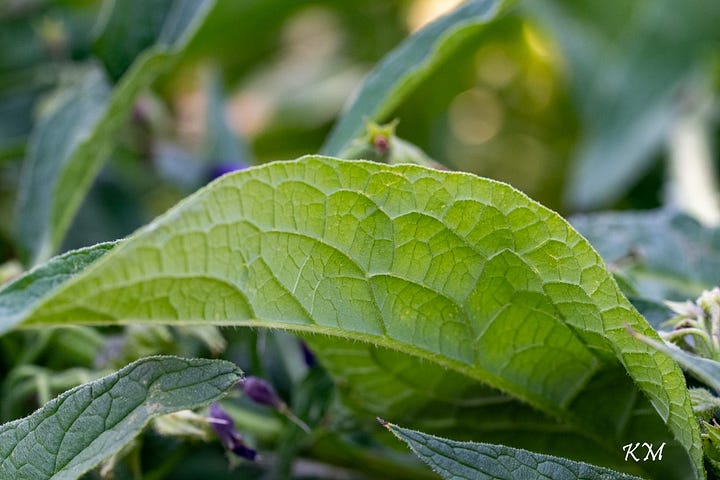
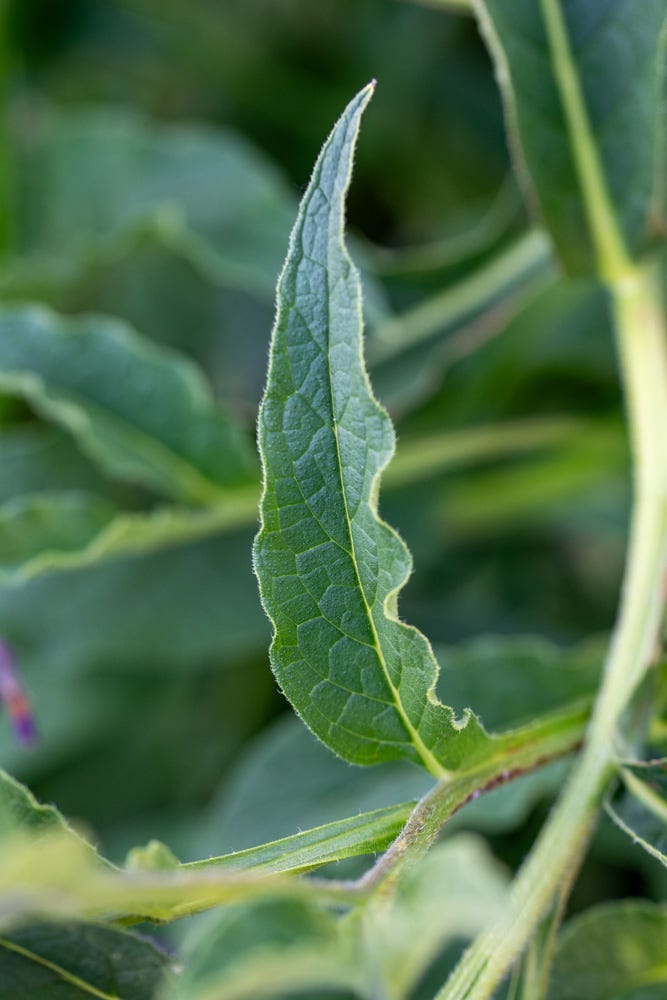
Spiritual Aspects: Comfrey embodies a feminine energy, is linked to the planet Saturn, and corresponds to the element of water. Comfrey is a great protector plant, especially when traveling. It’s also considered lucky and can help attract wealth into your life.
Preparations: Salve, infused oil, cream, compress, liniment, poultice
Contraindications: Topical use of comfrey poses no risk from PAs, so it is generally considered safe. There are precautions if used internally, but we are only focused on topical use with this mini monograph.
Red Raspberry Leaf: The Nurturer
Many people are unaware of the excellent medicinal qualities of red raspberry leaves because we tend to only think about the delicious raspberries on the plant. The leaf itself offers many medicinal qualities that are especially beneficial for women.
Even though it may be considered a woman’s herb, it offers other benefits to those without wombs and those past childbearing years.
💮 Red Raspberry Leaf Mini Monograph
Scientific Name: Rubus idaeus
Family: Rosaceae
Parts Used: leaf
Energetics: sweet, cooling, drying
Actions: astringent, antispasmodic, alterative, antiemetic, tonic
Identification:
Cultivation: Raspberries are perennials that thrive when you plant them in well-drained soil, provide regular water, and ensure they receive plenty of sunshine.
They will spread easily through runners (or sometimes called suckers), so before you know it, you will have a good-sized raspberry patch. Since mine are surrounded by a graveled area, I dig out the runners throughout the season and use them for medicine.
The roots only grow about 2 feet deep, therefore regular watering is best. Once they are large enough, they will need some support to keep them from flopping over and/or breaking in the wind.
Harvest: At the beginning of summer, pick young, healthy leaves before the flowers arrive. Harvest in the morning after the dew has dried.
Medicinal Uses: It tightens and tones tissues, including mucous membranes from the sinus tissue to the digestive tract. An example would be using it for diarrhea. It’s a well-known herb for pregnant women because it helps strengthen the uterus for labor and even assists the uterus in returning to normal following the birth.
You can also use it for heavy menstruation, anemia, muscle cramps, and nausea. The leaf is also high in vitamins and minerals, particularly manganese, zinc, calcium, and Vit A & C.
I like to drink raspberry leaf tea for its tannins and flavonoids, which provide a boost of antioxidants, anti-inflammatory, and anticarcinogenic properties.
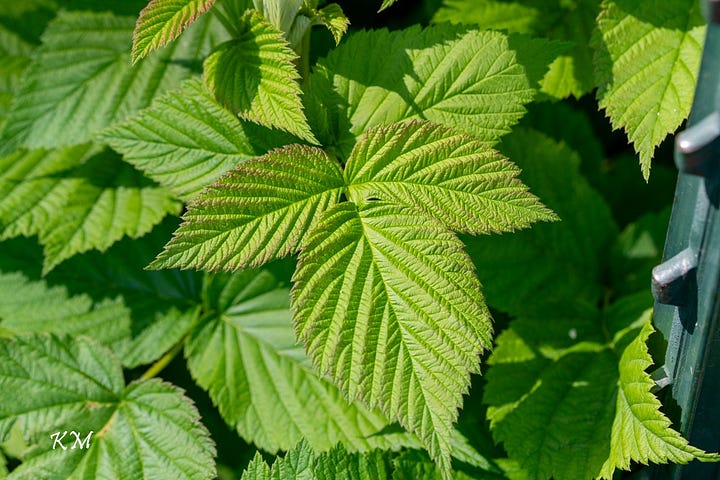
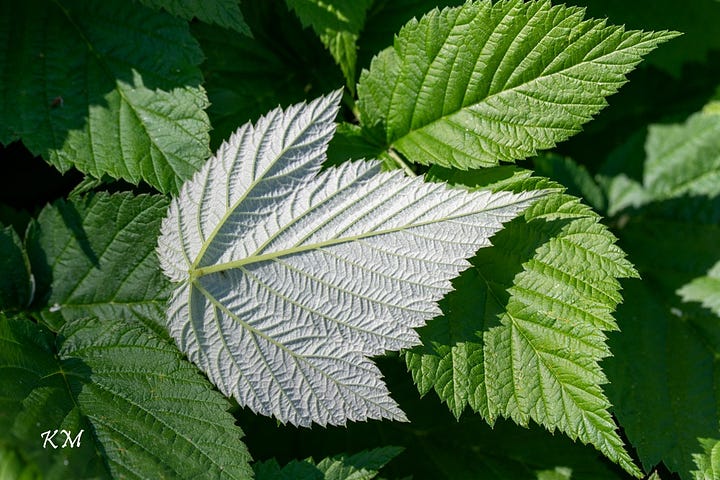
Spiritual Aspects: Red raspberry leaf is associated with the feminine, the planet Venus, and the water element. Its powers are protection and love - especially self-love. It can repair the “psychic womb,” the place where women store their greatest wisdom and unfailing intuition.
Preparations: teas, cold or hot Infusion, glycerite, tincture
Contraindications: Do not take if you have any hormone-sensitive condition, such as breast cancer, uterine cancer, uterine fibroids, or endometriosis. There are no known drug interactions with red raspberry.
*Excessive amounts of this herb can cause constipation due to its astringency.
Have you worked with any of these three herbs?
Let us know in the comments what you like to use them for. 🤩
References:
Easley, T., Horne, S. (2016). The Modern Herbal Dispensatory. North Atlantic Books.
Fischer-Rizzi, S. (2003). Complete Earth Medicine Handbook. Sterling Publishing Co.
NIH: National Library of Medicine. LiverTox: Clinical and Research Information on Drug-Induced Liver Injury
Shealy, N. (2018). The Illustrated Encyclopedia of Healing Remedies. Harper Collins Publishing.
Wiles, Briana (2018). Mountain States Medicinal Plants. Timber Press.
The herbal information provided here is intended to support your overall health and wellness and should not replace medical advice or treatment. It is recommended you consult your medical care provider if you plan to take herbs because there are contraindications, and they can interact with prescription medications.






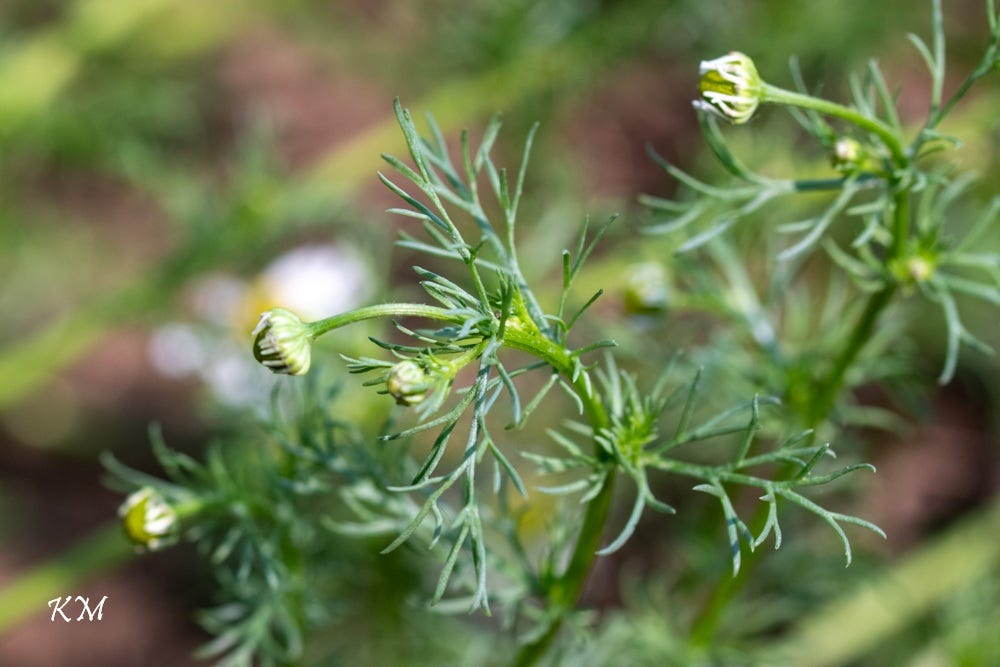



chamomile can be mixed with lavender for tea - can have it hot or cold, can try and experiment and have chamomile in lemonade, I have had raspberry as tea and with lemonade. I have not had the chance to make tea with comfrey. This is good info.